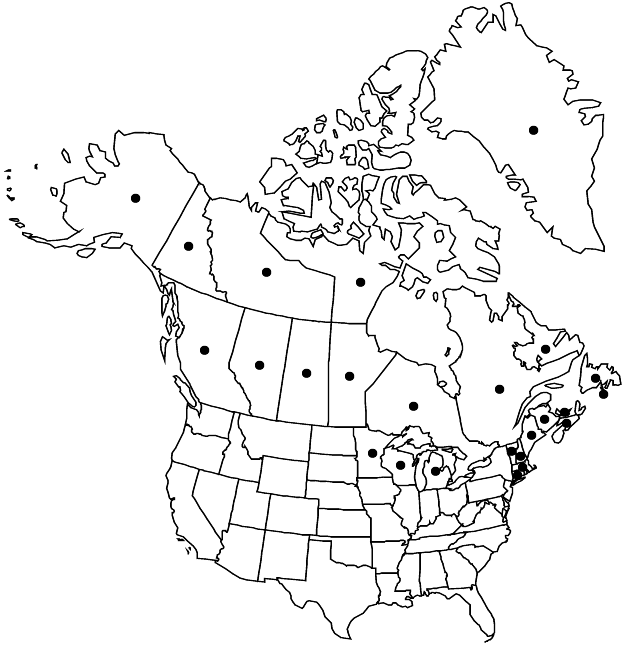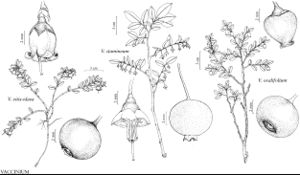Vaccinium vitis-idaea
Sp. Pl. 1: 351. 1753,.
Plants densely colonial, frequently mat-forming; twigs of previous year green, terete, puberulent, not verrucose. Leaf-blades pale and glandular abaxially, bright green adaxially, elliptic to obovate, 5–18 × 3–9 mm, glaucous-coriaceous, margins entire, slightly revolute. Pedicels 4–6 mm. Flowers: corolla pinkish white, 3–5 mm; filaments puberulent. Berries red, 8–10 mm diam. 2n = 24.
Phenology: Flowering late spring–early summer.
Habitat: Boreal taiga in jack-pine stands, muskegs, raised bogs, dry, rocky barrens, lichen woodlands, exposed habitats, heaths, high moors, headlands, tundras, cliffs, mountain summits
Elevation: 0-1800 m
Distribution

Greenland, St. Pierre and Miquelon, Alta., B.C., Man., N.B., Nfld. and Labr., N.W.T., N.S., Nunavut, Ont., P.E.I., Que., Sask., Yukon, Alaska, Conn., Maine, Mass., Mich., Minn., N.H., Vt., Wis., n Eurasia, circumboreal
Discussion
The distribution of Vaccinium vitis-idaea in North America extends from northwestern Greenland at 77° north latitude, south to Connecticut at 42° north latitude, and from 45° west longitude (southern tip of Greenland) west to 170° west longitude (Aleutian Islands); it is rare in Connecticut (not collected since the late 1800s), Massachusetts, Vermont, and Wisconsin. This species has been erroneously reported from New York; it hybridizes with V. myrtillus in northern Europe, producing V. ×intermedium Ruthe. The hybrid might be anticipated in North America, but the two species are not known to occur together anywhere in the flora area.
Selected References
None.
Lower Taxa
"/4" is not declared as a valid unit of measurement for this property.
